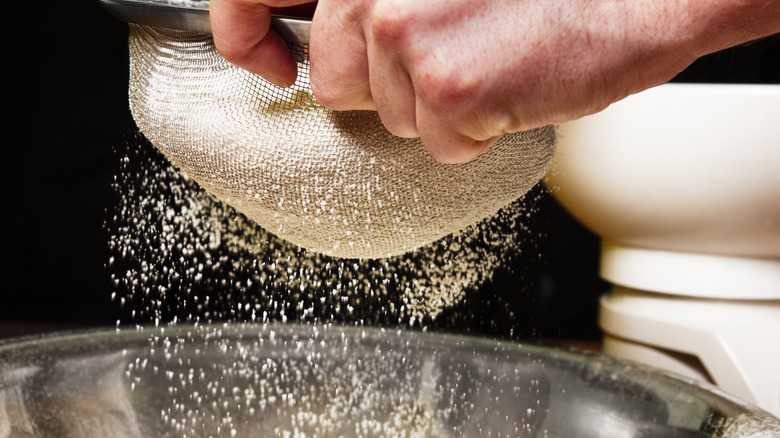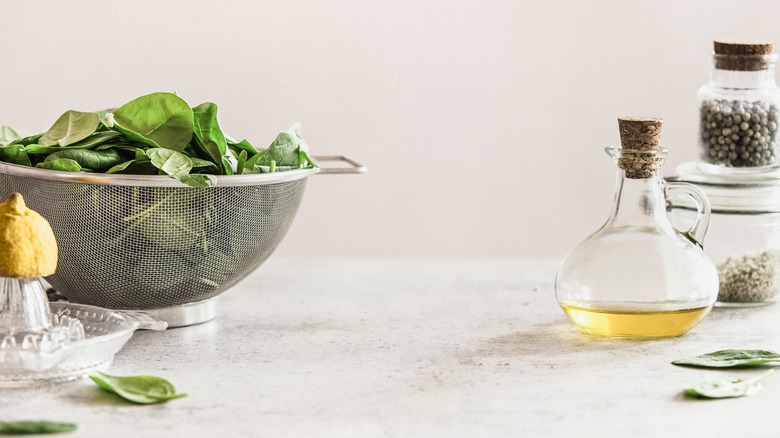Deep Cleaning A Fine-Mesh Sieve? You Need This Tip
Perfect for sifting flour, straining stock, and lifting fried food out of hot oil, a fine-mesh sieve is a workhorse of a kitchen utensil. However, this little guy can also be a headache to clean, particularly if fragments of food have gotten trapped in its tight lattice design and won't come out — no matter how diligently you scrub it. The good news is that you can conserve your energy the next time you're deep cleaning your sieve by soaking it in a solution of very hot water (but not too hot to overheat the handles and melt the plastic), soap, and distilled white vinegar for at least 15 minutes.
Employing this simple trick means you won't need to spend ages poking through the individual apertures of your fine sieve with a sponge, scouring pad, or spiky brush to dislodge flecks of trapped food. Simply submerge it in hot water, along with a splash of vinegar, and leave the solution to work its magic (you can even soak it overnight if your sieve is in dire need of some TLC).
This technique works in two ways. Firstly, the hot water soaks into any bits of food that have stubbornly caught in the hash-like pattern of the sieve, which softens them and loosens their grip on the mesh. This is especially useful if your sieve moonlights as a strainer for cooked vegetables, noodles, and rice, and isn't reserved solely for sifting fine flours and cocoa powder.
The vinegar kills bacteria and neutralizes odors
On the other hand, the vinegar in the hot water solution contains acetic acid, which breaks down any oil, dirt, and dried-on residues that are sitting on the surface of your sieve. Vinegar also has antimicrobial properties that can kill some varieties of bacteria, like E. coli, and neutralize odors. This odor-neutralizing quality is handy if you've been using your sieve to separate eggs as they can often leave an unpleasant eggy smell on dishes and utensils that lingers even when they're washed well with dish soap (an aroma that's described as "Zankha" in the Middle East).
Once you've soaked your sieve for at least 15 minutes, you should find it much easier to scrub it with soap before rinsing it under the tap. If there are still flecks of food stuck in the holes after soaking and rinsing, try pushing a bottle brush through the blocked pockets in the mesh to dislodge them. The fine tip of this variety of brush — used primarily to clean baby feeding bottles and the inside of reusable straws — is a nifty size for poking through the holes. However, this is a time-consuming task! Make a point to soak your sieve immediately after every use to avoid ever having to do it all again.

